Old and new New York meet at the tip of the island.
The city was born here under Dutch rule and became the nation’s first
capital after the Revolutionary War (1775–83). At the intersection of
Broad and Wall streets are the Federal Hall National Memorial, marking
the site where George Washington was sworn in as president in 1789, and
the New York Stock Exchange, the financial giant founded in 1817, whose
influence is felt worldwide. The 20th-century skyscraper era added drama
to the skyline. The 2001 leveling of the World Trade Center towers
damaged but certainly did not destroy lower Manhattan. Historic
buildings, exciting architecture, outdoor sculptures, and waterfront
promenades remain unscathed. Numerous museums and galleries add to the
area’s appeal.
|
A statue at the Federal Hall National Memorial
where George Washington was sworn into office is testament to the time
the president spent in New York City. So too is the pew where he
worshipped at St. Paul’s Chapel, and the museum at Fraunces Tavern where he said farewell to his officers in 1789.
|
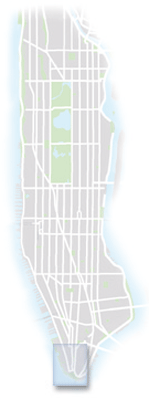
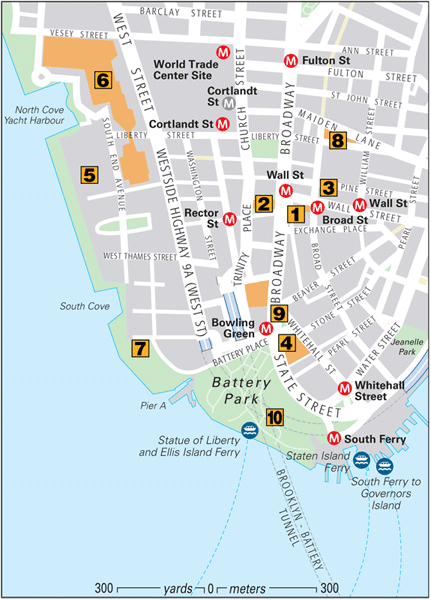
SightsNew York Stock Exchange The
present building opened in 1903, and behind its Neo-Classical facade is
the financial heart of the U.S. The exchange has grown from a dealing
with local businesses to a global enterprise. On the busiest days,
billions of shares are traded for more than 8,500 listed issues,
although the action is much calmer now that everything is computerized.
On its most active days, between five and seven billion shares trade
hands on the exchange.
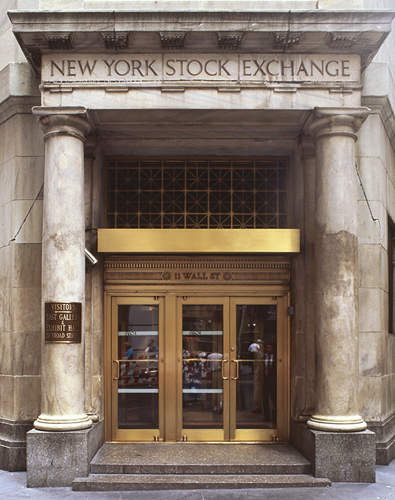
New York Stock Exchange
Trinity Church This
much-admired Gothic building is the third church on this site for one
of the U.S.’s oldest Anglican parishes, founded in 1697. The church has
had notable additions since completion in 1846, including the sacristy,
chapel, and Manhattan wing; the bronze doors were donated as a memorial
to John Jacob Astor III. Trinity is known for its musical programs, with
concerts each Monday and Thursday at 1pm and occasional Sunday concerts
by the full choir. Trinity also oversees the programs at St. Paul’s Chapel.
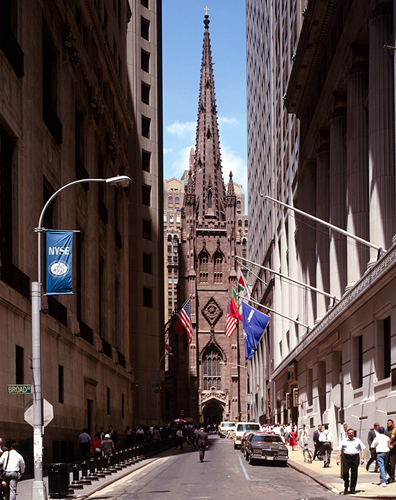
Trinity Church
Federal Hall National Memorial Although
the bronze statue of George Washington on the steps marks the site
where the nation’s first president took his oath of office, the original
building was replaced by this handsome, columned Greek Revival
structure in 1842. It served as the U.S. Custom House and a branch of
the Federal Reserve Bank before becoming a museum in 1955, with exhibits
of the Constitution and the Bill of Rights. Ranger-led tours are
offered several times daily.
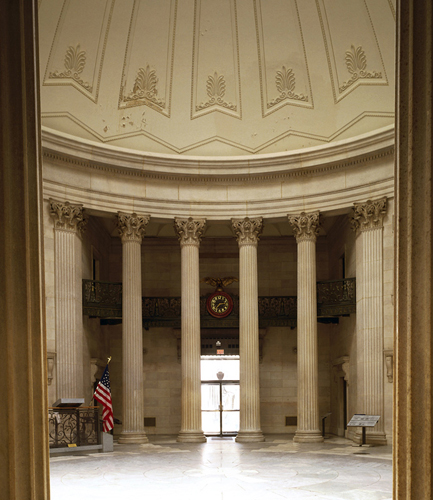
Federal Hall interior

Federal Hall National Memorial
U.S. Custom House A
renovation in 1994 installed gleaming galleries that circle the grand
rotunda of this classic building. It is now the George Gustav Haye
Center of the Smithsonian National Museum of the American Indian, with
changing exhibits of Native American life, including costumes and fine
crafts. Ceremonial objects, toys, and musical instruments in the
research room can be examined and researched further on the computer
installed there. 1 Bowling Green, between State & Whitehall Sts Museum open 10am– 5pm Fri–Wed, 10am–8pm Thu Free
Battery Park City Several
prestigious architects were involved in this extension of Manhattan, a
commercial and residential enclave built on a 92-acre landfill created
with earth displaced by excavation for the World Trade Center. A 2-mile
(3-km) esplanade offers grand Statue of Liberty views. Parts of the area
were damaged by the Trade Center collapse but a brighter future is
forecast. Enjoy the public works of art or visit the Skyscraper Museum.
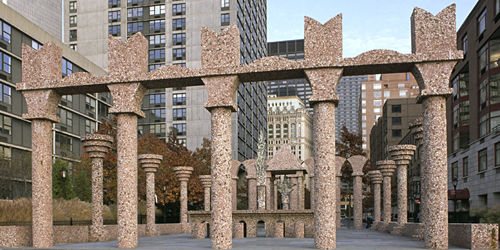
Battery Park City
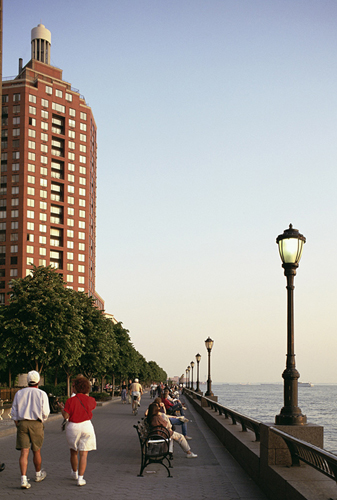
Battery Park City esplanade
World Financial Center Some
of the top U.S. financial companies have headquarters in the World
Financial Center, which was damaged in the September 11 attack. The
center of the complex is the Winter Garden, with a 120-ft (37-m) atrium,
palms and marble steps . Museum of Jewish Heritage A
memorable experience for all faiths is this chronicle of the
20th-century Jewish experience before, during, and after the Holocaust,
told with over 2,000 photographs, hundreds of artifacts, and original
documentary films. 36 Battery Place, Battery Park City Open 10am–5:45pm Sun–Tue, Thu, 10am–8pm Wed, 10am–3pm Fri & Jewish holiday eves Admission charge
www.mjhnyc.org
Federal Reserve Bank Although
gold is no longer transferred in payments between nations, much of the
world’s gold reserve remains stored in the five-story vault below this
building. All bank notes from this branch have the letter B in the
Federal Reserve seal. 33 Liberty St, between William & Nassau Sts Tours 9:30, 10:30, 11:30am, 1:30, 2:30pm, Mon–Fri Free, reserve ahead
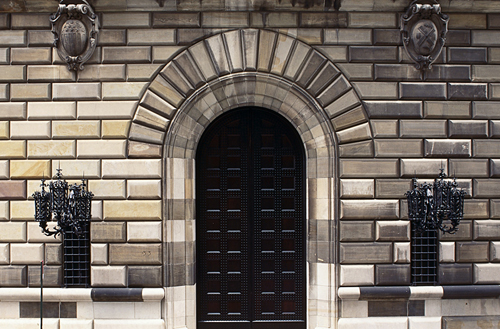
Federal Reserve Bank
Charging Bull Sculptor
Arturo di Modica unloaded this bronze statue in front of the New York
Stock Exchange late at night in December 1989. It was removed, but was
later given a “temporary” stomping ground on Broadway. The bull
signifies the strength of the American people after the 1987 stockmarket
crash. Battery Park Built
largely on 18th- and 19th-century landfill, this park at New York
harbor is usually visited for Castle Clinton, the 1811 fort and
embarkation point for Ellis Island and Statue of Liberty ferries. This
welcome swath of green is of interest for its many monuments and
statues.
|